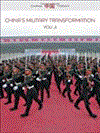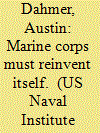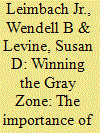| Srl | Item |
| 1 |
ID:
146546


|
|
|
|
|
| Publication |
Malden, Polity Press, 2016.
|
| Description |
xix, 284p.: tables, figures, mappbk
|
| Series |
China Today Series
|
| Standard Number |
9780745670799
|
|
|
|
|
|
|
|
|
|
|
|
Copies: C:1/I:0,R:0,Q:0
Circulation
| Accession# | Call# | Current Location | Status | Policy | Location |
| 058760 | 355.033551/YOU 058760 | Main | On Shelf | General | |
|
|
|
|
| 2 |
ID:
170864


|
|
|
| 3 |
ID:
170777


|
|
|
|
|
| Summary/Abstract |
US National Defense Strategy – like that of its peer competitors – relies on artificial intelligence (AI) for a military edge in potential conflict as well as a deterrent to such conflict. This reliance on AI raises two challenges: a changing relationship between the Department of Defense (DoD) and industry; and widely held safety concerns about the military use of AI. Recent tensions in that relationship potentially imperil the success of US strategy. In this article, Larry Lewis explains that the use of technology in war is not a new problem, and presents an action plan for improving mutual understanding and dialogue between the DoD and industry. While individual companies should choose their own path, this process should lead to a better shared understanding of risks and ways to better promote safety for the military applications of AI.
|
|
|
|
|
|
|
|
|
|
|
|
|
|
|
|
| 4 |
ID:
130621


|
|
|
| 5 |
ID:
169177


|
|
|
| 6 |
ID:
182020


|
|
|
|
|
| Summary/Abstract |
While the United States must always be ready to prevail during a high-end conflict --and overwhelming lethality represents a significant deterrent to conflict in the first place --the Nation must also be able to overwhelmingly compete and deter activity short of traditional armed conflict. In the language of emerging Joint Doctrine, this is known as the “Competition Below Armed Conflict” portion of the “Competition Continuum.” It is also referred to as the Gray Zone, Hybrid Warfare or Irregular Warfare. Winning in the Gray Zone means completing the “deterrence equation,” that is, precluding adversary aggression in competition below armed conflict with intermediate force capabilities (IFCs) in a manner similar to equipping the U.S. military element of national power with overwhelming lethality as a deterrent to armed conflict. IFCs, which include non-lethal weapons as well as other non-lethal tools, will bridge the gap that exists between a mission of mere presence and the use of lethal effects. These capabilities allow active measures when presence alone is insufficient to deter malign activities or when the use of lethal or destructive force is neither desired nor appropriate. The addition of IFCs to the Joint Force’s toolkit will help the Services maintain a decisive advantage over strategic competitors, in addition to the lethal force that is the hallmark of the U.S. military.
|
|
|
|
|
|
|
|
|
|
|
|
|
|
|
|